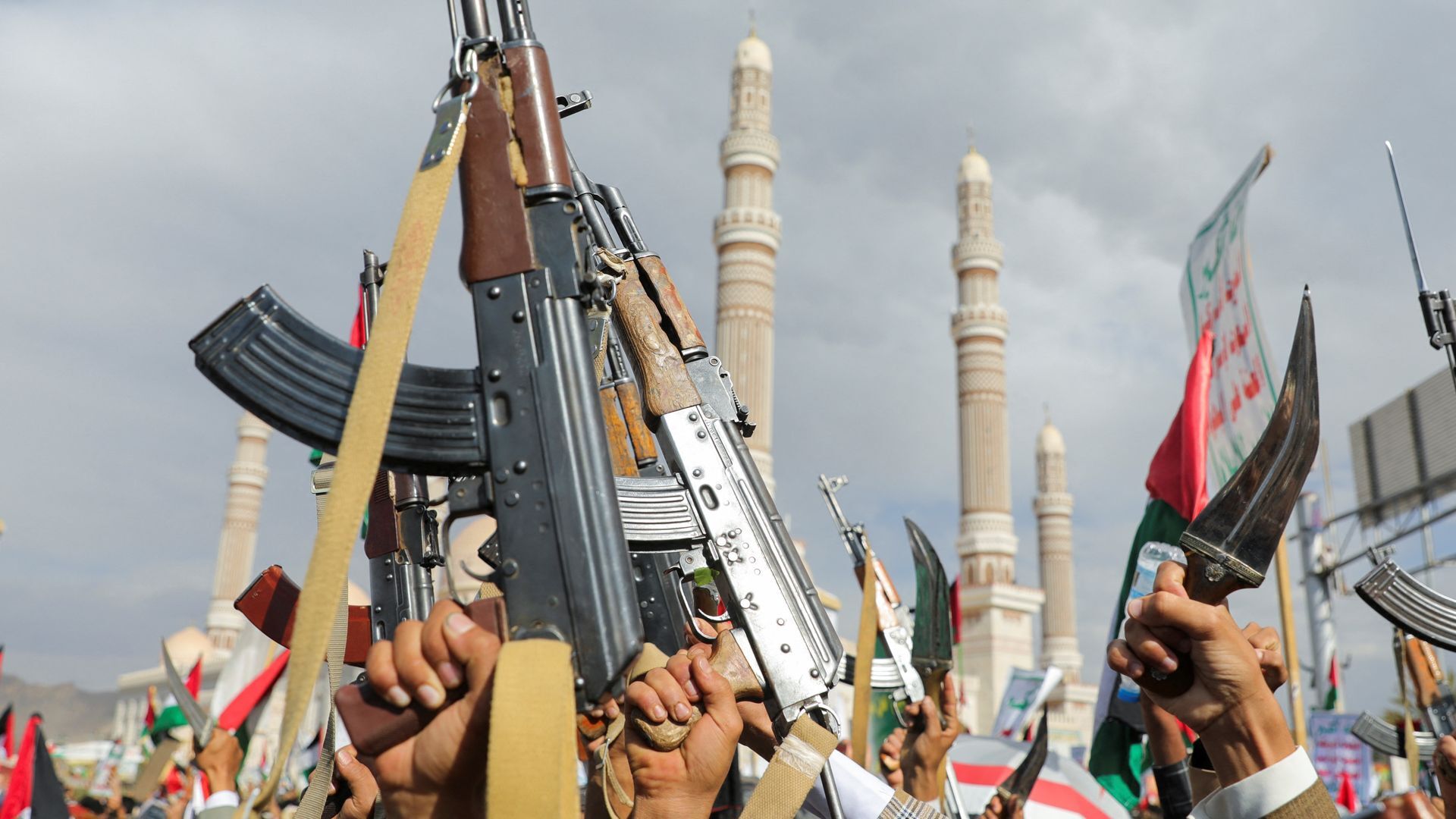
[RYAN ROBERTSON]
THINGS ARE NOT GOING WELL IN THE MIDDLE EAST. A YEAR AGO, THE HEAD OF U.S. CENTRAL COMMAND SAID THE REGION WAS ON THE VERGE OF UNPRECEDENTED AND TRANSFORMATIVE PROGRESS.
[Gen. Kurilla]
Today, the central region faces its most volatile security situation in the past half century. This is not the same central region as last year,
[RYAN ROBERTSON]
THE GENERAL MADE THOSE REMARKS WHILE SPEAKING BEFORE THE SENATE ARMED SERVICES COMMITTEE DURING A HEARING ON THE FISCAL YEAR 2025 DEFENSE AUTHORIZATION REQUEST.
KURILLA SAYS AFTER HAMAS LAUNCHED ITS OCTOBER SEVENTH TERRORIST ATTACKS AGAINST ISRAEL–IRAN SAW AN OPPORTUNITY TO EXPLOIT THE SITUATION AND TRY TO RESHAPE THE MIDDLE EAST TO ITS ADVANTAGE. KURILLA SAID FOR IRAN, IT WAS A ONCE-IN-A GENERATION OPPORTUNITY.
[Gen. Kurilla]
Iran has worked for decades to strategically encircle the region with its proxies, and in the past six months, we have seen every proxy in the Iranian threat network operationalized in Iraq, Syria, Lebanon, Gaza, the West Bank and Yemen.
[RYAN ROBERTSON]
NOT ONLY ARE THOSE PROXIES NOW MOBILIZED, BUT THEY ALSO HAVE ADVANCED WEAPONRY FROM IRAN. MISSILES, DRONES, ROCKETS, MORTARS…IRAN’S PROXIES HAVE FULL-ACCESS TO ALMOST EVERY WEAPON IT MAKES.
AND WHILE TALKS AROUND A CEASEFIRE IN GAZA CONTINUE–THERE ARE NOW REPORTS STARTING TO SURFACE ISRAEL MAY BE PLANNING TO LAUNCH A GROUND ATTACK AGAINST HEZBOLLAH IN SOUTHERN LEBANON…HEZBOLLAH, ANOTHER IRANIAN PROXY, USED THE WAR IN GAZA TO UP ITS OWN BARRAGE OF ATTACKS.
GENERAL KURILLA SAID AS IT STANDS RIGHT NOW, NO OTHER REGION ON THE PLANET PRESENTS MORE OF A DIRECT THREAT TO THE UNITED STATES THAN CENTCOM–WHICH INCLUDES THE MIDDLE EAST, THE LEVANT, AND PARTS OF CENTRAL ASIA.
IN ADDITION TO IRAN AND ITS PROXIES, KURILLA SAID ISIS IS STILL ACTIVE IN THE AREA, RETAINS THE CAPABILITY AND WILL TO ATTACK THE U.S…AND WILL LIKELY TRY TO DO SO WITHIN THE NEXT 6 MONTHS.
KURILLA SAID CHINA AND RUSSIA ARE ALSO QUICK TO CAPITALIZE ON ANY DESTABILIZING INFLUENCE IN THE REGION.
[Gen. Kurilla]
They have shown meager interest or capability to reduce regional tensions, but rather, they have increased their efforts to pressurize regional partners across all elements of national power, Collectively, Iran, Russia and China are strengthening their relationships and foster a chaotic landscape favorable for their exploitation,”
[RYAN ROBERTSON]
IRAN SELLS ABOUT 90% OF ITS OIL TO CHINA…AND TEHRAN AND MOSCOW HAVE MULTIPLE DEFENSIVE AGREEMENTS IN PLACE WHICH INCLUDE THE EXCHANGE OF WEAPONRY AND OTHER MILITARY KNOWLEDGE.
IRAN, CHINA, AND RUSSIA MAY BE GETTING CLOSER–BUT KURILLA SAID THE US CONTINUES TO HOLD A STRATEGIC ADVANTAGE OVER ITS ENEMIES IN TERMS OF MILITARY-TO-MILITARY PARTNERSHIPS.







